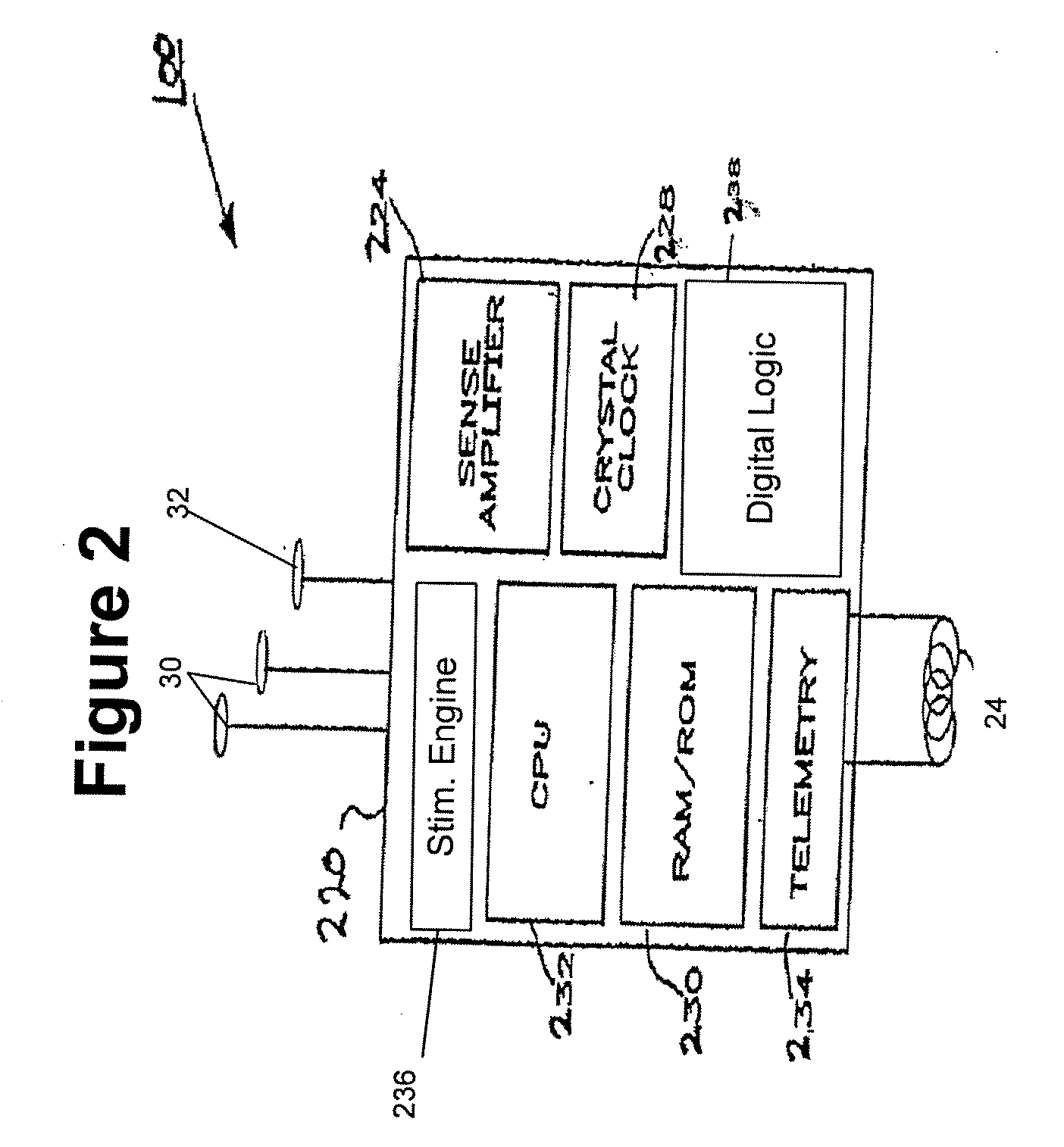Probabilistic neurological disorder treatment
a neurological disorder and probabilistic technology, applied in the field of probabilistic neurological disorder treatment, can solve the problems of not recognizing temporal correlations between seizures, and achieve the effects of reducing on-line computational complexity and power consumption, improving performance, and minimizing failur
- Summary
- Abstract
- Description
- Claims
- Application Information
AI Technical Summary
Benefits of technology
Problems solved by technology
Method used
Image
Examples
example 1
[0073] Suppose a subject with primarily nocturnal seizures is monitored continuously for one month (or some period of time that yields a representative or useful sample) with no therapy enabled, and then for a second month (or other period), while being treated with an open loop control program that consists of 5 mA of stimulation at 100 Hz for 1 minute every 10 minutes (i.e., on 1 minute, off 9 minutes). Using time-of-day in generating tREL (as in above example), the graphs in FIG. 8 illustrate pE(τ) for months 1 (solid) and 2 (dash-dot), respectively. In this example, it is apparent that the therapy program had a seizure-reduction effect during the night, but may have increased seizure frequency during the day. Given this information, the user (subject or caretaker) may improve the overall efficacy of therapy by developing a new control program that is obtained by combining the approaches to produce a second control program that is equal to the previous one (on 1 minute, off 9 min...
example 2
[0075] Consider a subject that is being treated with a closed-loop stimulation program. For example, after a period of no therapy, the treatment program provides for 2.5 s of continuous stimulation to the anterior thalamic nucleus, triggered by every other seizure detection (generated by an automated seizure detection algorithm). The subject continues to have seizures, so the stimulation duration is increased to 30 s of continuous stimulation, administered to the same brain location, again triggered by every other seizure detection. After a period of time, the monitoring data is collected and analyzed as described above with the fiducial times equal to the starting time of each stimulation. The corresponding probabilities of seizure survival, relative to elapsed time from start of stimulation, are shown in FIGS. 10 and 11. In this manner, the system enables the user to determine the duration of stimulation that has optimal effect in terms of seizure reduction (approximately 15 s), b...
example 3
[0078] A subject that is being treated with an open-loop therapy may be equipped with a device for intensive continuous monitoring of biological signals (such as EEG or EKG), which will detect and quantify features of these signals (e.g., epileptiform brain activity or heart rate changes) associated with seizures for a period of time (e.g., 48 hr). The monitored activity will be analyzed with respect to some fiducial time sequence (e.g., times of onset of stimulation delivery, times of changing of stimulation intensity, time of day, etc.) and the empirical probability density of seizures relative to time with respect to the fiducial sequence is generated.
[0079]FIG. 12 provides an illustration of such information, in which the fiducial times are the times of onset of trains of electrical stimulation delivered for 30 s every 10 minutes. From this analysis it becomes apparent that the open-loop stimulation program provides very little immediate effect, but has a carry-over, protective...
PUM
 Login to View More
Login to View More Abstract
Description
Claims
Application Information
 Login to View More
Login to View More - R&D
- Intellectual Property
- Life Sciences
- Materials
- Tech Scout
- Unparalleled Data Quality
- Higher Quality Content
- 60% Fewer Hallucinations
Browse by: Latest US Patents, China's latest patents, Technical Efficacy Thesaurus, Application Domain, Technology Topic, Popular Technical Reports.
© 2025 PatSnap. All rights reserved.Legal|Privacy policy|Modern Slavery Act Transparency Statement|Sitemap|About US| Contact US: help@patsnap.com



